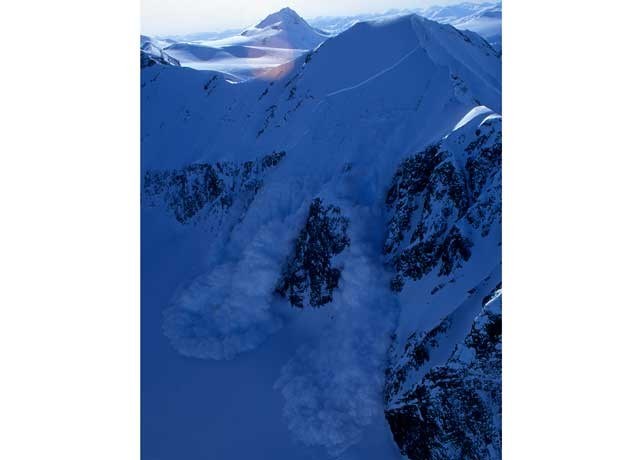A below-average snowfall so far this winter has lots of skiers and boarders thinking about the backcountry, but a word of warning: the cold temperatures have created a slick surface for new snow to slide on.
Anna Brown, a public avalanche forecaster with the Canadian Avalanche Centre in Revelstoke, said Monday that the overall probability of avalanches has been reduced by the low snowfall.
However, once it starts to snow, skiers and snowboarders eager to head into the backcountry could easily trigger avalanches.
“With the cold temperatures, the snow is becoming sort of looser and less cohesive in some locations,” Brown said. “In the future if we do get a really big dump of snow, it could cause us some problems.
“The rest of the snow coming in is cold and light… generally (it) won’t load up and give us big hazards quite yet, but we’ll be keeping an eye on it for the next few days, through Christmas.”
A report from the Canadian Avalanche Centre, dated Dec. 21 and valid until Christmas Eve, shows a moderate risk for avalanches in alpine and treeline areas throughout the Sea to Sky corridor. The forecast from Whistler Blackcomb avalanche forecasters for the same period is also moderate. =
A primary concern in the region is the development of a “soft slab” in the north and northeastern portions of the region due to recent storm snow and “convective flurries.” These slabs could be easily triggered and will slide easily on weak facets.
As for runs within Whistler Blackcomb ski area, Brown said alpine areas halfway up 7th Heaven and near the Whistler Peak Chair are among those most vulnerable to any avalanches.
“The stuff that just has snow and rocks and nothing else really,” she said.
It isn’t hard for a skier or snowboarder to start an avalanche, as Brown tells it.
“The most common way of triggering an avalanche that people get caught in themselves is by their own skis,” she said. “Just in riding over the terrain you cause stresses in the snowpack. They release a fracture and that fracture actually may propagate wider than just the crack that your skis make.
“Then you may be standing on what’s like a slab of snow, and once that slab starts moving, it tends to push people over and that’s how they get caught in an avalanche.”
One of the biggest contributors towards increased avalanche hazard is the small snow crystals that come with cold temperatures.
“The recipe that we’re looking at right now has to do with the weak, sugary crystals that are sitting on the ground,” Brown said. “They are really not the type of surface that will adhere well to any new snow.
“You’ll be looking at some sharply increasing avalanche hazard through your region. That’s something to be looking out for.”
Anyone wishing to keep abreast of avalanche forecasts can go to Whistler Blackcomb’s Avalanche Advisory on its website. They can also go to www.avalanche.ca — that’s the link to the Canadian Avalanche Centre’s website, where you can find updates not only for Whistler, but for areas throughout British Columbia.




